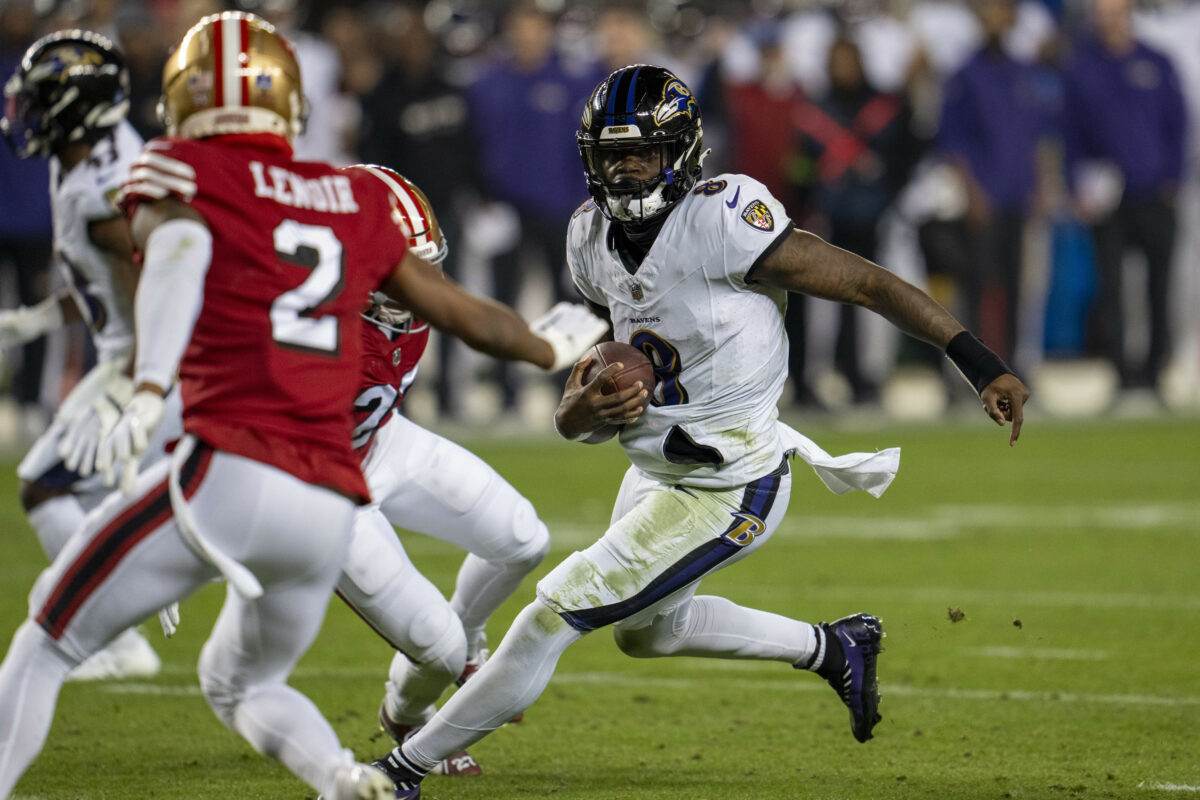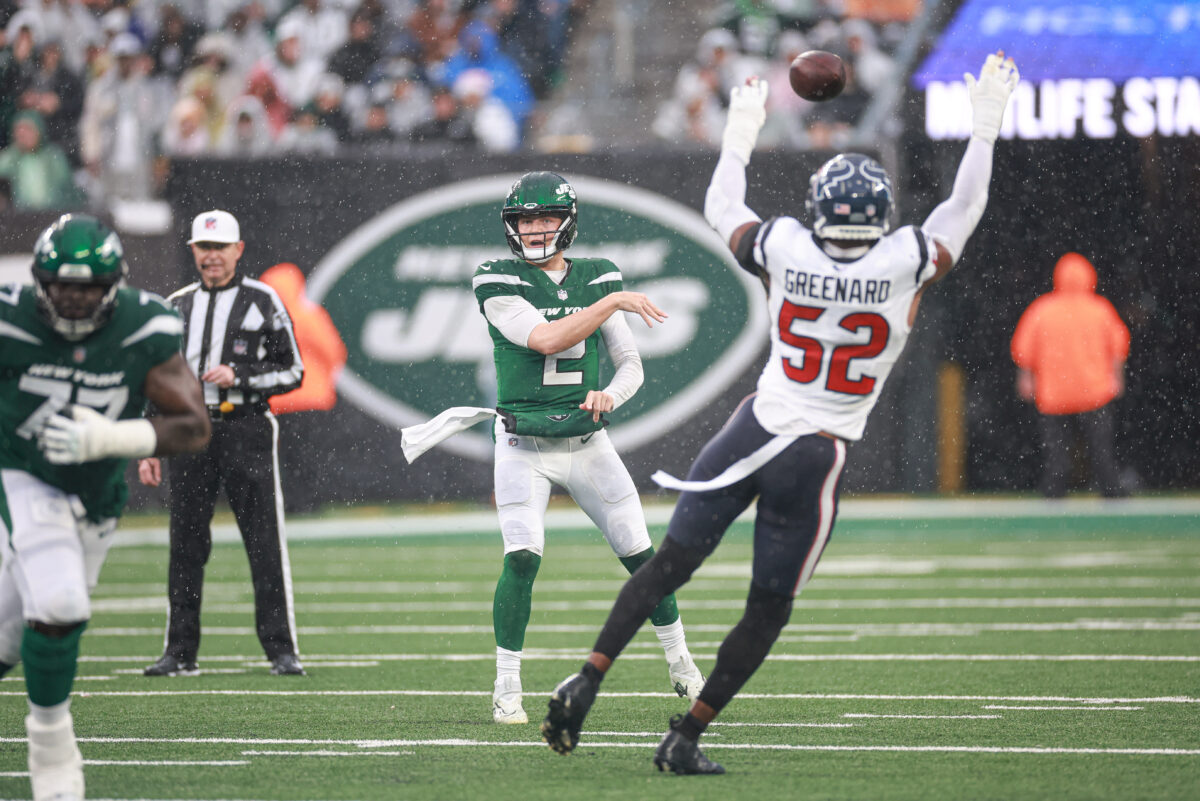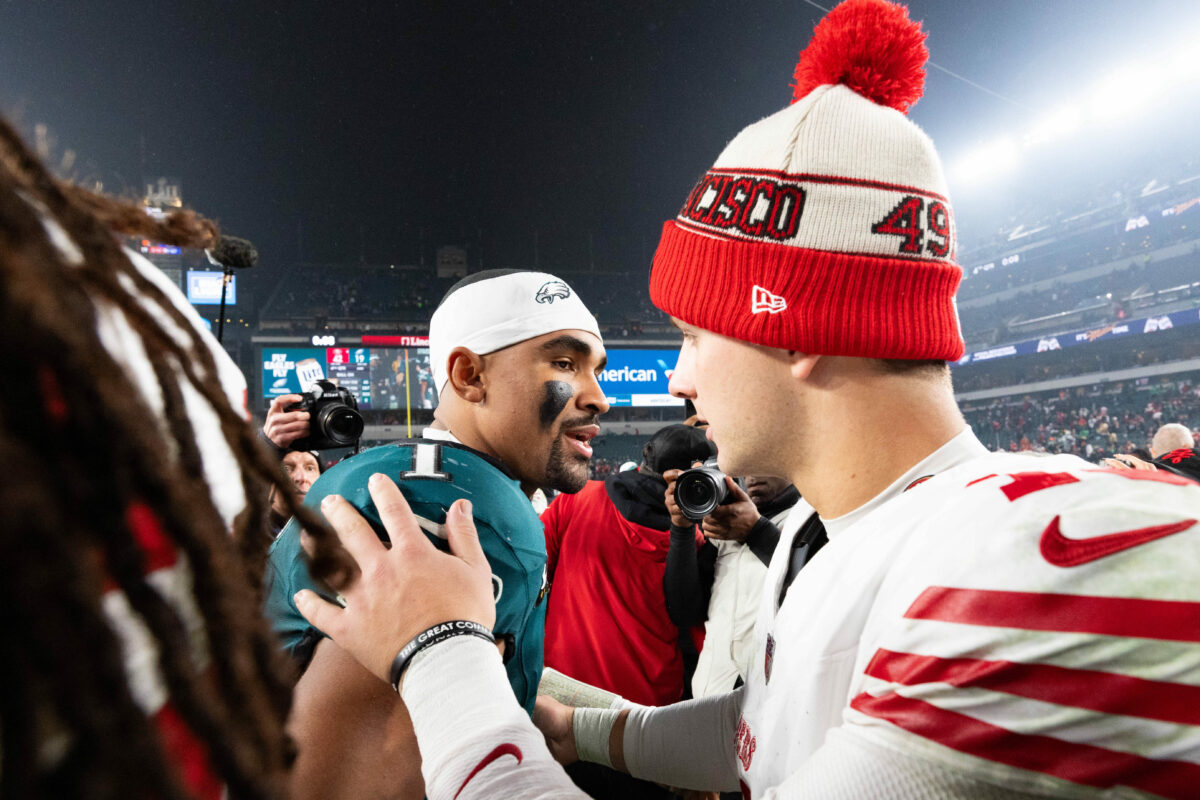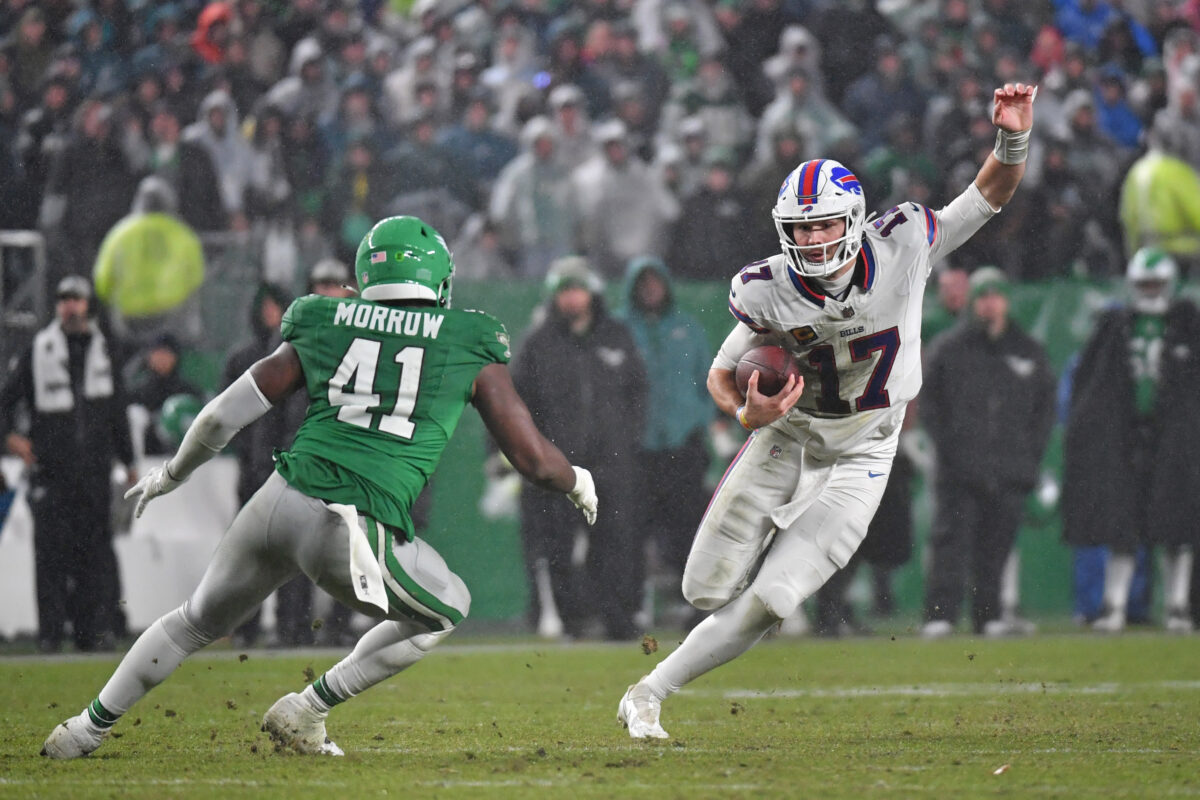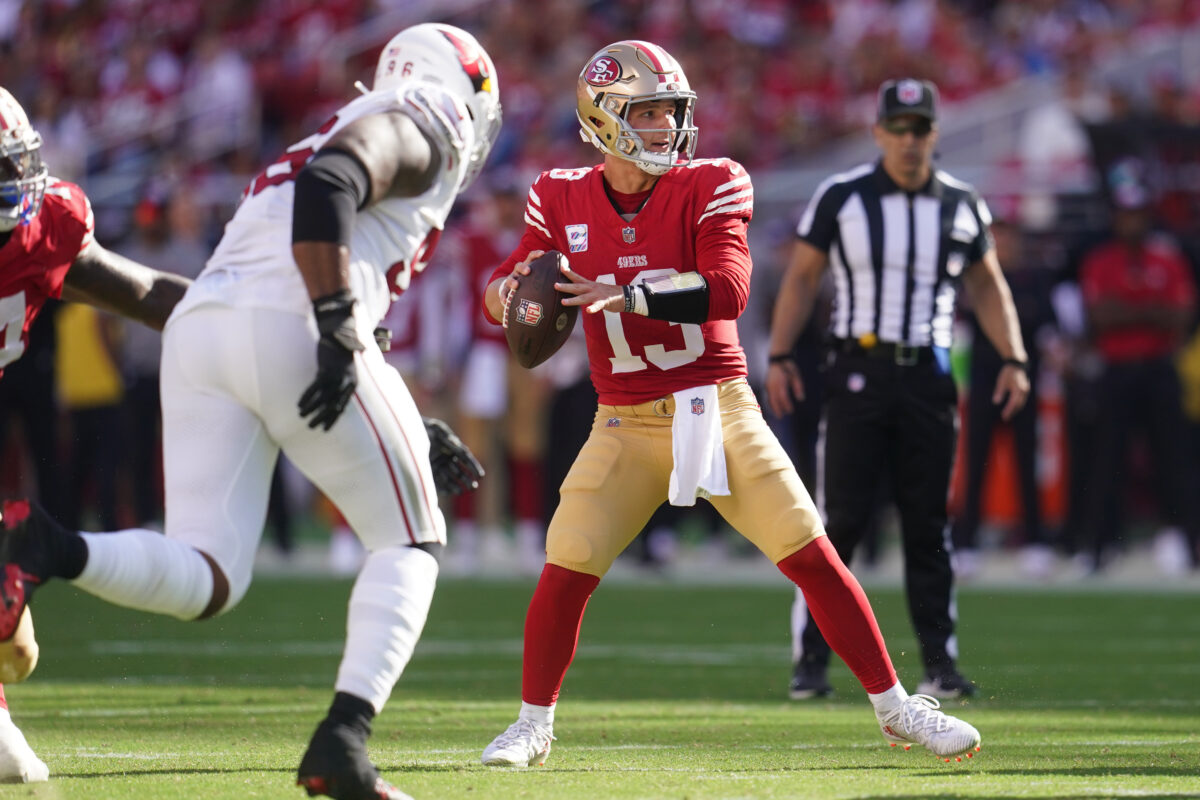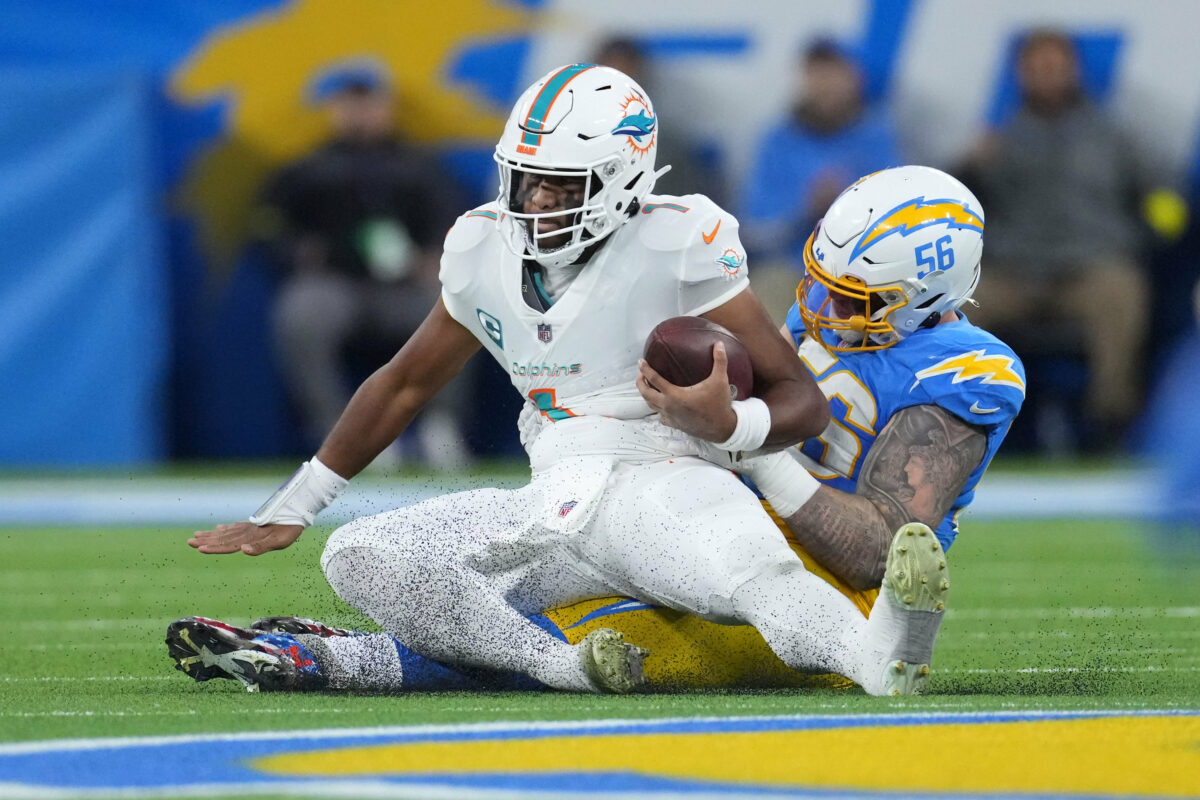The MVP of the 2023 regular season, barring an upset, will be Lamar Jackson. The best quarterback of the 2024 NFL Playoffs, according to advanced stats, is Brock Purdy.
Purdy’s highly efficient passing game made him the NFL’s top passer when it came to expected value this fall. While Kyle Shanahan’s offense and a roster loaded with healthy playmakers ensured he’d have a cushy landing for any drop-off, the second year quarterback still commanded a high-scoring, risk-averse passing game in a way Jimmy Garoppolo had been unable over the previous five seasons.
So where does that leave Jackson, Dak Prescott, Josh Allen and the rest of the league’s postseason quarterback, aside from behind him? Fortunately, we’ve got advanced stats to help us figure out a rough order.
Expected points added (EPA) is a concept that’s been around since 1970. It’s effectively a comparison between what an average quarterback could be expected to do on a certain down and what he actually did — and how it increased his team’s chances of scoring. The model we use comes from The Athletic’s Ben Baldwin and his RBSDM.com website, which is both wildly useful AND includes adjusted EPA, which accounts for defensive strength. It considers the impact of penalties and does not negatively impact passers for fumbles after a completion.
In order to accomodate 2024’s least utilized starter, we’ll drop the snap count threshold to 90 — exactly where Mason Rudolph landed in four games for the Pittsburgh Steelers. That leaves us with a crowded graph of 53 quarterbacks, most of whom ranged from mediocre to genuinely terrible in 2023.

That’s a lot to sort through. Let’s talk about the guys who are still playing football — but start with the ones who aren’t in order to temper expectations a little.




